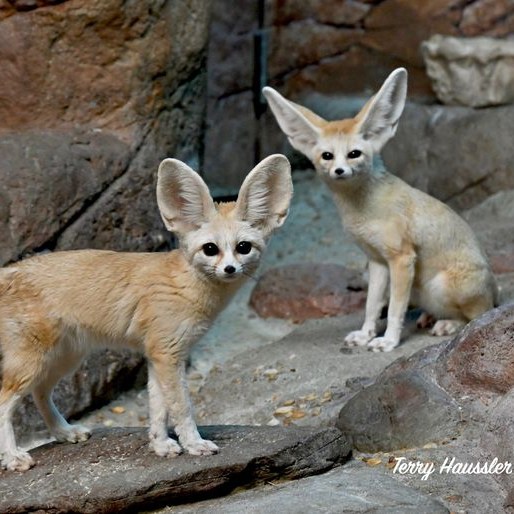– Uncover the secrets of the diminutive and delightful Fennec fox, the tiniest canid
– Learn how Comet and Astrid, the new residents in the Night Hunters exhibit, thrive in their specialized habitat
– Explore the significant role of a Fennec fox’s oversized ears in survival within harsh desert climates
– Delve into the unique behaviors and adaptations that make Fennec foxes such a fascinating species to observe and study
– Get inspired by the conservation efforts in place to protect these adorable and vital components of desert ecosystems
When the sun sets, and the stars begin to pepper the dark blanket of the night sky, a unique and captivating world comes to life within the confines of the Night Hunters exhibit. Here, we’ve recently welcomed two enchanting additions to our nocturnal family – Comet and Astrid, a pair of Fennec foxes whose tiny stature and oversized ears have captured the hearts of all who’ve had the pleasure of encountering them.
Fennec foxes are remarkable for many reasons, not least of which is their status as the smallest species of fox in the many petite canids. They are perfectly designed to thrive in the vast deserts of North Africa, where the sun is relentless, and the open dunes stretch beyond the horizon.
As they skulk through their sandy surroundings, one of Comet and Astrid’s most striking physical features is their magnificent ears. Extending anComet and Astrid’sere from 4 to 6 inches, this radio much more than contributes to their endearing appearance. These oversized ears play a critical role in their survival, acting as nature’s air conditioners by dissipating the searing heat of their desert home. But it’s not all about staying cool; with such an expansive surface area, their ears also afford them an acute hearing that enables them to detect even the subtlest sounds of prey moving beneath the shifting sands.
This unique combination of hearing capabilities and heat regulation allows these nocturnal hunters to excel in their arid environment. But the Fennec foxes’ adaptations don’t stop there. Their petite paw pads are covered in thick fur, allowing them to walk on hot sand without succumbing to the scorching temperatures. This insulating fur also acts as a barrier against the cold desert night.
Observing Comet and Astrid as they explore their habitat, it’s easy to marvel at how their behaviors are a dance of instinct and adaptation. For example, it may seem like mere play at first glance when you see them engage in feverish digging. The reality is quite different – in the wild, these small dunesmiths are constructing extensive burrows that provide vital shelter from the elements and predators. Their complex tunnel systems can be extensive, reflecting the Fennec foxes’ keen intelligence and sociability.
Fennec foxes use their wits and speed to catch various prey in their natural habitat, which can range from desolate deserts to sparse scrub. From insects to small rodents and birds, these adept predators are not fussy eaters. Their omnivorous diet also includes a mix of fruits and leaves, providing necessary moisture in an environment where water is scarce.
Another inprovidingct of the Fennec fox is its social structure. They are one of the friendly fox species, often living in groups and demonstrating complex social behaviors. Observing Comet and Astrid interact with one another offers a glimpse into the intricate social dynamics and the evident bonds that form within the Fennec families.
Witnessing just how attuned these creatures are to their surroundings, it’s easy to recognize why the role of Fennec foxes in desert ecosystems is invaluable. As both predator and prey, they are key components in maintaining the delicate balance of their native biomes. Yet, like many species, they are not impervious to the growing pressures of habitat loss and human interference.
Conservation efforts are vital to ensuring the longevity and health of Fennec fox populations. By supporting programs that address habitat preservation and combat illegal wildlife trade, we can contribute to safeguarding these small predators for future generations. Some of these programs also focus on educating local communities about Fennec foxes, fostering a harmonious coexistence with these spirited animals.
The arrival of Comet and Astrid serves as an opportunity for delight and amusement and an important educational tool. By learning about these animals, their adaptations, and the challenges they face, we develop a deeper appreciation and a sense of responsibility for their wild cousins.
Engaging with visitors, these Fennec foxes draw myriad questions, sparking curiosity across all ages. Each question unlocks knowledge, bringing us one step closer to understanding and protecting the delicate tapestry of life they are part of.
As you stroll through the enveloping darkness of the Night Hunters exhibit, take a moment to stop and observe these captivating creatures. Notice not just their unmistakable ears or swift, silent movements but the subtle expressions or the flicker of understanding that crosses their faces.
In witnessing the lives of Comet and Astrid, we are reminded of the extraordinary feats of evolution and the intricate adaptations that make each species unique. Our fascination and empathy encourage us to take action, learn, and cherish our planet’s wild wonders.
So, the next time you find your earn and through the peaceful paths of the Night Hunters, be sure to pause and greet Comet and Astrid. Reflect on the beauty and intrigue they bring into nd consider our impact on theirs. For in these tiny foxes’ large ears and curious gazes lies the call of the wild – a reminder of nature’s vast and beautiful intricacies that demand our respect and stewardship.
*****
Source Description
Stop by Night Hunters and say hello to the new Fennec foxes, Comet and Astrid. Fennec foxes are the smallest fox species in the world. They are known for their large ears, reaching 4 to 6 inches long. Those ears not only help them listen for prey underground but also dissipate the excess heat of the desert.


